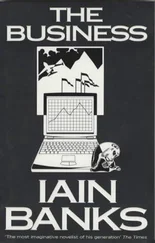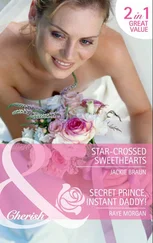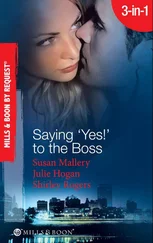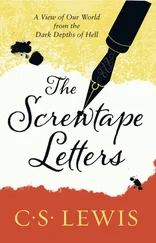The Appearance of a Letter
Putting the draft aside for a moment, you now need to consider the appearance of your letter. This will have a significant impact on the reader and can affect the success or failure of your letter. There are two main areas to think over:
1) envelopes
2) paper.
From the recipient’s point of view, the envelope you use is his or her first point of contact with you – and could also be the last! A cheap and scruffy one with a misspelt name and address scribbled across it is unlikely to impress the reader or put him or her in a favourable mood towards the letter within it. Choose quality envelopes, which help to convey a professional and dignified image of your firm. White or other conservative colours can develop this impression – and also stand out from the nondescript buff envelopes used so often by run-of-the-mill businesses.
Carefully put the recipient’s name, job title (if appropriate), address and postcode in the centre of the front of the envelope, making sure they are identical to those on the letter itself. If you make an error, always start again with a fresh envelope – writing over or crossing out a mistake looks careless. Should you have a rubberstamp of your firm’s name and/or logo, imprint it at the top left. Neatly place a stamp in the top right-hand corner.
You should select watermarked, A4-sized paper (or 8½ x 11 inches for U.S. businesspeople) for your letters – ideally it will match the envelopes so that a neat and unified image is put across. Half-sized A5 paper (U.S. equivalent would be 4 X 6 inches) can be used for shorter letters such as acknowledgements, assuming that you have smaller envelopes as well. It is important that the paper and envelope fit together properly, maintaining that complementary and coordinated impression.
You will have to use common sense to decide whether to type or write the letter by hand. A typed letter is more formal and professional in appearance, whereas a handwritten one is more personal, which may be appropriate on some occasions, such as when you have to apologise, offer condolences or thank someone. Whatever your choice, letters must be neat and easy to read. Tidy, error-free text is essential, as are paragraphs of similar size and generous margins at the top, sides and bottom. Fold each sheet into a third and third again, rather than into quarters; this ensures that it will be less creased and more attractive when removed from the envelope.
It is then sensible to think about the layout of your letter. Clearly, this is as important as its appearance. You may wish to incorporate numerous entries, as follows:
• letterhead
• references
• date
• name and address
• greeting
• subject matter
• message
• continuation sheets
• complimentary close
• signature
• enclosures
• copies.
Your letterhead should include your firm’s name, address, telephone number, fax number and logo, as relevant. Other additions may be required by law, such as the names of the company directors, although this depends on the way in which your business is organised and run. Your professional advisers will confirm the exact requirements, on request. Typically, the letterhead will cross the top of the paper, unless you prefer to place it to one side or the other.
These are optional, although you should quote your own (‘Our ref:’) if you handle a large volume of letters, and/or the recipient’s (‘Your ref:’) if this has been stated in earlier correspondence. Usually, references comprise the initials of the writer followed by those of the typist. Thus, a letter from Peter Abbot typed by Sarah James might have the reference PA/SJ. Alternatively, each subject and/or person in the firm can be given his or her own reference; SAL for Sales, 32 for Janet Baker, and so on. Place references three to five lines beneath the letterhead and one line space apart.
Your letter must be dated – an obvious point perhaps, but one which often seems to be overlooked none the less. Put 3 (not 3rd) January 1996, 11 (not 11th) August 1996 or 2 (not 2nd) December 1996. Never abbreviate to ‘Jan’, ‘Aug’ or ‘Dec’. Also avoid ‘3/1/96’, ‘11-8-96’ or ‘December 2 1996’ (unless of course this is the accepted style in your country, as would be the case in the U.S.). Type or write the date in full, some two or three lines below the previous entry.
Always incorporate the recipient’s name, job title (if appropriate), address and postcode in the letter. Check spellings if necessary by referring to earlier letters or telephoning his or her company for guidance. Be especially careful with the person’s name – it is irritating to be addressed as Miss when it is Mrs, Jonathan instead of Jonathon or Plum ley rather than Plum leigh. It looks careless too. Place the name and other details two or three lines under the date.
Try to avoid using ‘Dear Sir’, ‘Dear Madam’ or (even worse) ‘Dear Sir or Madam’ as a greeting because they all sound vague and half interested – even the most modest effort would enable you to discover the name of the sales director, accounts manager or whomever you are writing to. Using the person’s first name or surname depends upon how well you know him or her and the relationship that exists between you. It may be wise to put ‘Dear Mrs Patel’ when congratulating a managing director on her success, whereas ‘Dear Sam’ could be used when thanking a colleague for a favour. Put the greeting some two to three lines beneath the name and address.
This is an optional entry but can be included to identify quickly the subject of the letter and concentrate the reader’s mind upon it. Typically incorporated when the letter deals with one subject only, sometimes preceded by ‘Re:’ and in capitals, ordinary type or underlined as preferred, it should be placed one line below the greeting.
Your message must be spread out over the required number of paragraphs. Each of these should deal with one main point and be of approximately equal length. Do attempt to create a well-balanced look if you can. The first paragraph should commence one line under the preceding entry, with one-line gaps separating subsequent paragraphs.
Some lengthier letters will have to be written over two or more sheets. Use letterheaded paper for the first page, with subsequent ones being typed (or handwritten, as required) on plain paper. Leaving about six lines from the top of the page, put the page number, date and the recipient’s name, on three separate lines, down the left-hand side of the page. Then leave a further two or three lines before continuing with the letter.
End your letter with a complimentary close – ‘Yours sincerely’ if you began with ‘Dear Tom’ or ‘Dear Mrs Barham’, ‘Yours faithfully’ if you started (perhaps unwisely) with ‘Dear Sir’ or ‘Dear Madam’. Alternatively, use a less formal ending such as ‘Yours’, ‘Best regards’, or ‘Kind regards’ if you feel it is appropriate to the situation. These are being used more frequently nowadays. Place the complimentary close one line beneath your final paragraph.
Читать дальше












